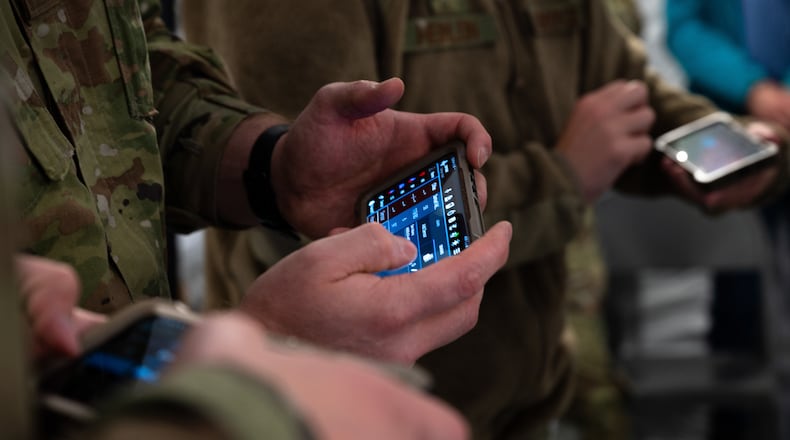The idea is simple but profound: A smartphone app that replaces pen and paper records — records that sometimes don’t fare well on turbulent flights or muddy battlefields.
The Joint Operational Medicine Information Systems (JOMIS) picked BATDOK for use by all military branches as the joint integrated electronic health record for point-of-injury and en route care, AFRL said.
The software makes it easier for medics in tough situations to record vitals, administer critical care and give the location of casualties in combat environments, AFRL says.
Following an announcement at the July 2022 Defense Health Information Technology Symposium in Florida, demand for BATDOK demonstrations grew tenfold, AFRL noted.
“We’re definitely proud of our product,” Capt. Minjong Yoon, deputy product manager for BATDOK, said in a new interview with the Dayton Daily News.
The app takes sections of vital care notes and renders them easy to use, read and share in difficult situations.
“There are some limitations with hard (paper) documentations, right?” Yoon said. “They can be harmed by blood, sweat and tears and other environmental factors, such as rain, snow, wind, you name it. You rip it, now you have two pieces of documentation and you lose a pen — you can’t document it any more.”
The tool offers space or sections to note an array of vital information, easily shared or updated.
“We took those subsections and what we did was, broke it into a user interface that’s friendly to use and it’s easy to document, because we populate all the injuries and we capture all the vitals,” Yoon said.
The upshot is a tool that makes a challenging situation — caring for a wounded Airman or soldier in austere environments — easier and quicker.
To see other military services adopt BATDOK as an official care standard is satisfying.
“It’s a big deal because now we not only affect the Air Force, we affect all the other services as well,” Yoon said. “We basically take their capabilities and needs — the Army needs something special, the Navy needs something special, or I guess, personalized.”
The needs peculiar to each service point to another advantage over paper. The tool’s open architecture offers software that can be updated.
“We’ve witnessed a big uptick in BATDOK’s inclusion and adoption into various joint exercises,” Dr. Gregory Burnett, lead engineer for the 711th’s product development branch, said in an AFRL statement. “Each of the services is layering BATDOK into their pipelines and overarching planning strategy for modernizing operational medicine.”
BATDOK has been provided for evaluation and testing to all the Department of Defense services, Burnett said.
It has also been tested by allied forces in the United Kingdom, Australia and Morocco.
JOMIS collects health care requirements from the military branches and provides needed information technology.
“AFRL developed a robust operational medicine tool that has been widely acknowledged by medical commanders as the future of information technology in combat point-of-injury medicine,” Sandra McIntyre, JOMIS program manager, said in a statement.
About the Author


